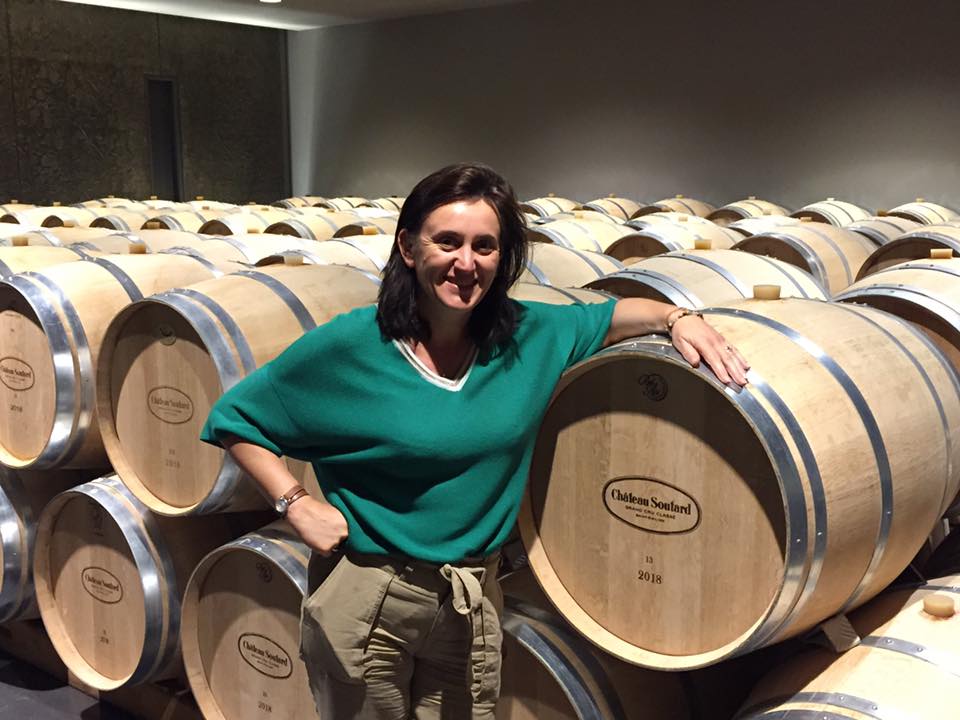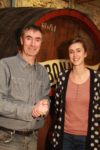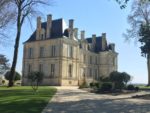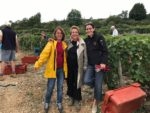Château Soutard
A beautiful property combining architecture, great terroir, respect for the environment and wine tourism. A property to follow!
Château Soutard is an emblematic wine-growing estate of Saint-Emilion, awarded Grand Cru Classé status. The property covers 30 hectares and produces an average of 70.000 bottles each year.
 The history of Château Soutard goes back to Roman times when vines were already cultivated, some vestiges found on the spot attest to that. Like any property of the time it was not 100% devoted to the cultivation of the vines but managed in polyculture. However the first written records mentioning Soutard dates back to 1513 with the mention of the bourdieu (locality in Gascon dialect) of Mayne de Soutard, an area with a farm and a mill. These buildings remained in place for a long time since it was not until 1741 that Jean Couture, notable of Saint-Emilion acquired this locality, razed the farm buildings and the mill to build the current “Maison de Maître” as we know it today. However, he did preserve, as evidence of the nobility of this place, the bread oven, the laundry and the dovecote of the time.
The history of Château Soutard goes back to Roman times when vines were already cultivated, some vestiges found on the spot attest to that. Like any property of the time it was not 100% devoted to the cultivation of the vines but managed in polyculture. However the first written records mentioning Soutard dates back to 1513 with the mention of the bourdieu (locality in Gascon dialect) of Mayne de Soutard, an area with a farm and a mill. These buildings remained in place for a long time since it was not until 1741 that Jean Couture, notable of Saint-Emilion acquired this locality, razed the farm buildings and the mill to build the current “Maison de Maître” as we know it today. However, he did preserve, as evidence of the nobility of this place, the bread oven, the laundry and the dovecote of the time.
Subsequently Soutard was owned by the family des Ligneris, famous local family, who participated greatly in the fame of the Château. In 2006, AG2R La Mondiale, a French social protection company and already owner of Château Larmande (since 1990), Château Grand Faurie La Rose (since 2005) and Château Cadet-Piola (since 2009) bought it.
Let’s go together to meet Château Soutard and Véronique Corporandy, cellar master of the estate.
Why did you choose to make wine?
“I think I’ve always wanted to do this job. I grew up in the vineyard, in the vineyards of Barsac, in Sauternes. This job has always been obvious to me even if I do not come from winegrowers parents.
 What I like about this job is that we are working on one of the rarest agricultural products where we can complete the loop. That is to say, we start by studying the soil, rooting the vine and then the plant itself. Then we will work on the maturities and then comes the work in the winery with different vinifications. After this long work comes the promotion, the education about its consumption then the sale. We therefore work the vine and its fruit from A to Z. The wine is a natural product which absolutely requires the intervention of man. Otherwise the grapes would be attacked by disease, eaten by birds and the wine would turn sour. There would be no wine. This is what I like about my job, this intervention of man on nature but for the sole purpose of magnifying it, without putting himself forward. It’s fascinating.
What I like about this job is that we are working on one of the rarest agricultural products where we can complete the loop. That is to say, we start by studying the soil, rooting the vine and then the plant itself. Then we will work on the maturities and then comes the work in the winery with different vinifications. After this long work comes the promotion, the education about its consumption then the sale. We therefore work the vine and its fruit from A to Z. The wine is a natural product which absolutely requires the intervention of man. Otherwise the grapes would be attacked by disease, eaten by birds and the wine would turn sour. There would be no wine. This is what I like about my job, this intervention of man on nature but for the sole purpose of magnifying it, without putting himself forward. It’s fascinating.
In the end it’s a bit like a child to guide. I often think that every year has a new baby. What is also fascinating is that wine is above all a product vector of conviviality, reflection, culture, exchange and meeting. It’s a wonderful job! ”
Where does the name Château Soutard come from?
“We did some research and it seems to come from the English Sout Hard. Indeed following the marriage of Eleanor of Aquitaine with the King of England all the duchy of Aquitaine, one of which was Guyenne, was reattached to the British crown. The region thus experienced English domination until the end of the 100 years war. ”
What is the signature of Château Soutard ? What makes it possible to recognize wine in blind tasting?
 “At first place at the tasting we easily recognize the limestone plateau. These are wines in which there is wealth, a fresh side as well as a certain acidity that comes out. I would say that Soutard wines are a little more dense and a little more structured than others of the plateau. They are not in exuberance. Soutard’s wines are broad, full and straight while offering a little wild side.
“At first place at the tasting we easily recognize the limestone plateau. These are wines in which there is wealth, a fresh side as well as a certain acidity that comes out. I would say that Soutard wines are a little more dense and a little more structured than others of the plateau. They are not in exuberance. Soutard’s wines are broad, full and straight while offering a little wild side.
Our property base has changed in the past 15 years. There is a strong terroir identity, a common theme in all our vintages but also an evolution of the style of the wines. After all, we must remain at the service of our terroir! ”
I would add for my part that in recent years a lot of work on the subject has also been done. These are wines that offer good drinkability, race and freshness. These wines are not too woody , not concentrated too much and whose extractions have not been pushed too much.
Do you have an eco-friendly approach?
“Yes, right now we are under HVE3 certification (High Value Environment Level 3). What is interesting in this labeling is that it is global. It takes as much into account the work in the vineyard, the work in the cellar as the protection of people too. It is not only about taking into account a phytosanitary notebook but a company as a whole.
We also have a large agro-forestry project at Château Petit Faruie de Soutard (same group). We will put in place a more global approach, more integrated into the environment. We would like to test alternative cultivation methods, rehabilitate hedges, corridors for animals, set up a market gardening project … We really want to make these eight hectares a laboratory of agronomy, recreate the fauna and flora, recreate a natural balance. We will also soon be creating an animal traction school here … ”
Soutard is one of the jewels of wine tourism on the right bank, could you tell us about this activity ?
“Wine tourism is a new activity for us. Before the purchase of the property we did not really set it up on our other Châteaux. We opened the shop and started to welcome people in 2011 which was quite pioneering for the time. Currently we welcome around 20,000 people a year. We are lucky to have a splendid tool for this activity. Indeed we are at the gates of Saint-Emilion, on a passing axis, the buildings are beautiful and the wines are good, everything is done to welcome the world.
We propose different visits for the private individuals: visits in groups, private visits, customized visits, guest rooms …. We also offer fun walks through the vineyard by foot or by bike. They are suitable for adults and also for the little ones.
To complete this we would like in the near future to open a restaurant at Château Petit Faurie de Soutard.”
Do you have an anecdote about the property ?
“We have on our lands Gallo-Roman furrows. They are located at the exit of Château Soutard, going towards Château Larmande. These are furrows dug directly into the limestone rock. They have been regrooved in the 19th century. As the rock is at surface level, there is not really any soil. So they dug to put earth in the grooves and plant the vines in the rows.”
What is the next big project for Château Soutard ?
“In recent years we have been devoted a lot to Château Soutard, by investing a lot in infrastructures, vineyards and expansions. Our next big project is the filing for the new classification of Saint-Emilion. Château Soutard is already a Saint-Emilion Grand Cru Classé but we would like to apply to become Saint-Emilion Grand Cru Classé B. See you in 2022! ”
Thanks to the Château team for the warm welcome.
Château Soutard
33330 Saint-Émilion
+33(0)5 57 24 71 41





